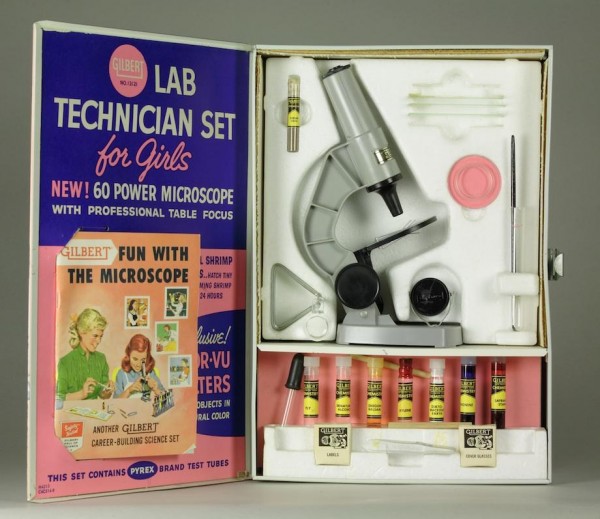
Rebecca Onion is the curator at a new Slate blog that showcases nifty finds from America's historical archives. So far, she's got a photo of the be-loinclothed winner of a eugenics-inspired Better Baby Contest; a breakup letter written by Abraham Lincoln; and this specimen of 1950s-style STEM recruitment toys for girls.
What's interesting about this chemistry set is that you can't really say it's more or less sexist than the types of science kits you see marketed heavily to girls today. Sure, it's in a pink box and heavily insinuates that the best job a woman can hope for in science is as somebody's assistant. But, on the other hand, it's apparently the exact same chemistry set sold to boys, just with different packaging. Whereas today, pink-colored science kits trend heavily toward "girl" things, like teaching you how to make your own scented soaps — but at least you're in charge of the soap-making lab.
Progress!
The set, which is preserved in the Chemical Heritage Foundation’s collection of chemistry sets, is a product of post-WWII anxiety over the nation’s lack of what was called “scientific manpower.” Having seen what a difference science made in the war (the bomb, radar, penicillin), and realizing that the amount of work to be done in labs and industrial R&D was limitless, Americans worried that insufficient numbers of young people wanted to be scientists. Some called for young women to be included in recruitment efforts. Women had been largely shut out of scientific careers up until that point. But they had a major point in their favor: They were undraftable. If girls got the right training, future wartime labs could be staffed by women, who were naturally bound to the homefront.Read the rest at The Vault
But all science jobs are not alike, and women didn’t get the plum ones. Historian John Rudolph, at the University of Wisconsin-Madison, has written about postwar efforts to upgrade the science curriculum. He found that girls were recruited to science careers after the war, but only for jobs that were to the side of the main show: lab technician, science teacher.

No comments:
Post a Comment